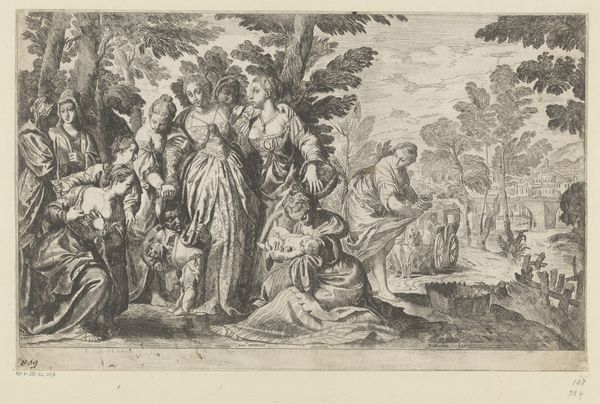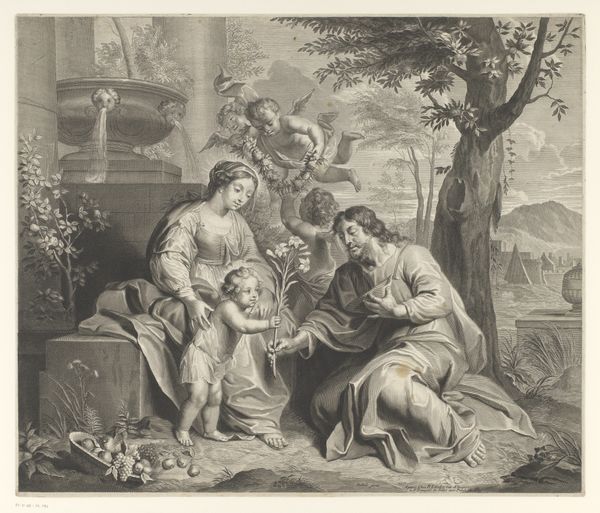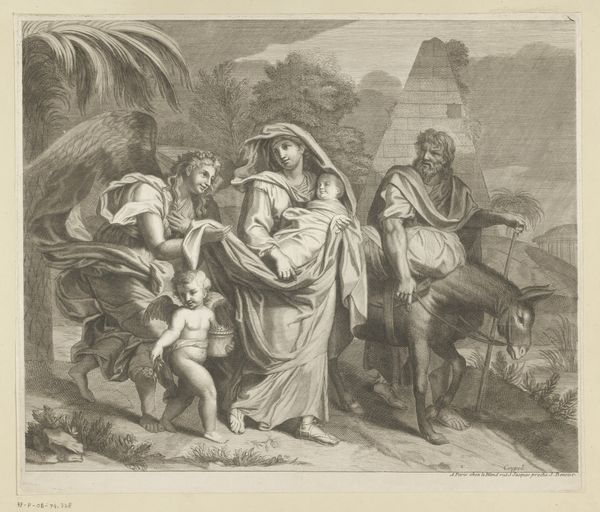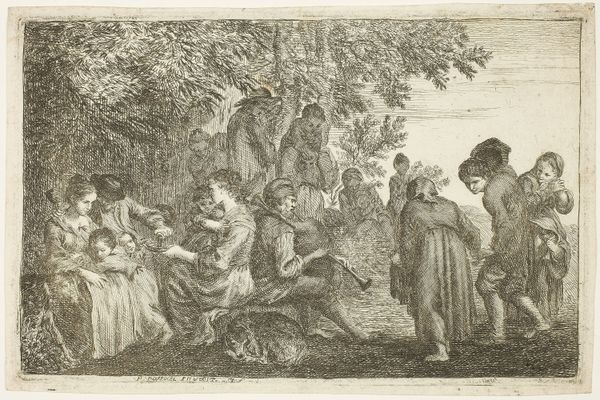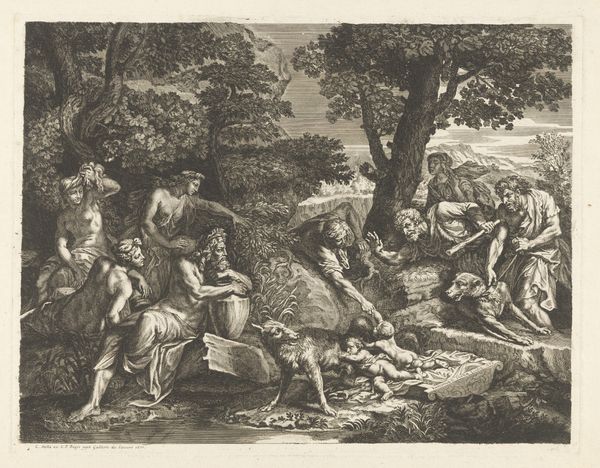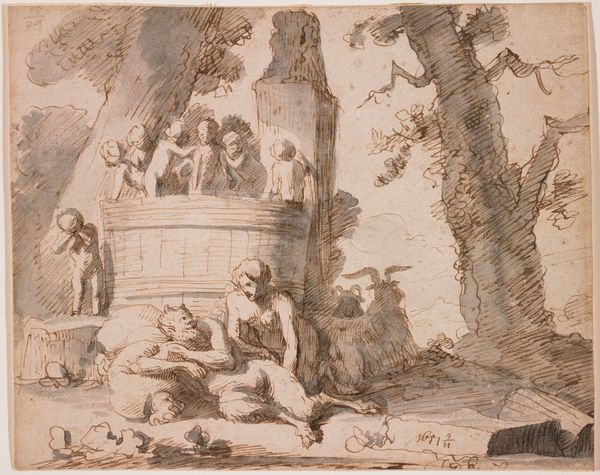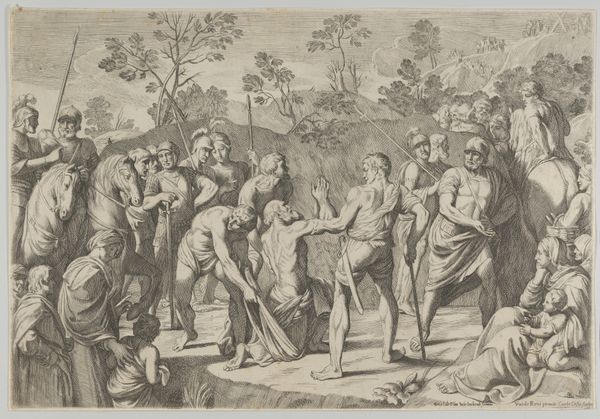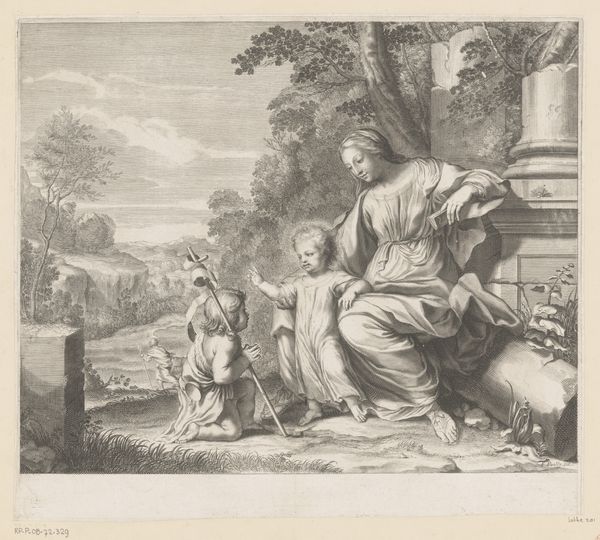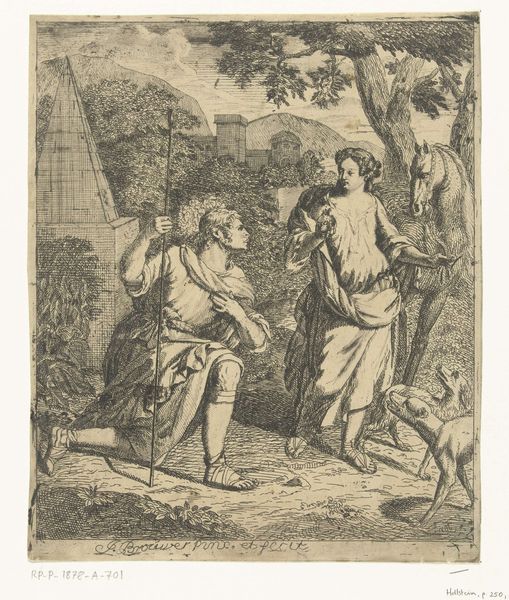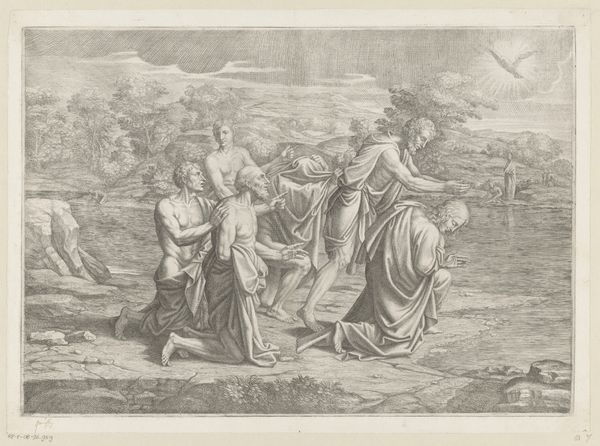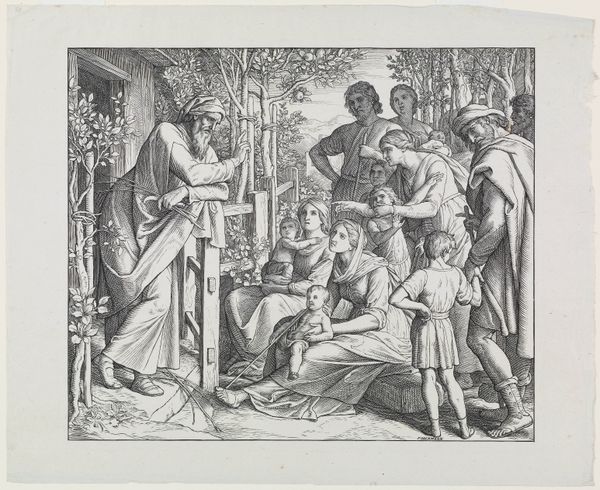
print, engraving
#
baroque
# print
#
landscape
#
figuration
#
history-painting
#
engraving
Dimensions: height 401 mm, width 535 mm
Copyright: Rijks Museum: Open Domain
Editor: So, this is "Rest on the Flight into Egypt," an engraving from around 1650-1671. It's got this peaceful, pastoral feeling despite the heavy subject matter, with the Holy Family pausing during their escape. There's almost a genre scene vibe here, with Mary doing laundry. What socio-political elements might influence its interpretation? Curator: That’s a keen observation. While seemingly serene, these "Rest on the Flight" images, including this one, functioned within a specific political and social climate. Consider how they reinforced the authority of the Church through visual storytelling but, additionally, provided commentary on social structure. The image presents a humble portrayal of the Holy Family in a recognizable landscape – connecting them to the everyday lives of viewers. Note how that donkey is eating, perhaps alluding to local husbandry? The artist shows this escape was no grand affair but an exertion of ordinary laborers. Editor: I hadn’t thought about it that way. I guess I was so focused on the apparent domesticity, like it’s just an everyday scene. Curator: Exactly. And what does that contrast do for the message? This blend was common. Landscape allowed printmakers to disseminate baroque styles beyond altarpieces, to integrate devotional images of great narrative depth. Who does this work glorify, and who is positioned as witness to such authority? Editor: That's a powerful point, it speaks to the influence prints could have at the time. I suppose I always saw it through purely aesthetic lenses. Curator: We often think of aesthetics separate from socio-cultural meaning, but understanding the political landscape surrounding this work adds a richer dimension, revealing its complex layers. Editor: This helps me realize the historical implications tied to what seems to be simple devotion. Thank you.
Comments
No comments
Be the first to comment and join the conversation on the ultimate creative platform.
